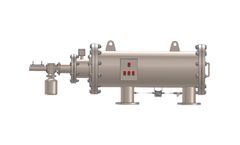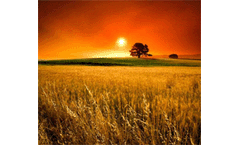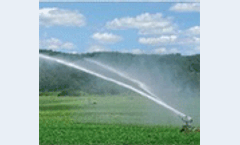Crop Water Use Articles & Analysis
20 articles found
For generations, farmers have relied on chemical fertilizers to boost crop yields. However, these fertilizers come with a hidden cost: environmental damage. ...
It relies on data-gathering sensors and advanced analytics to optimize crop production, water use, and other agricultural inputs. Intelligent irrigation controller is one of the key components of precision agriculture.An intelligent irrigation controller is a device that uses advanced algorithms and sensors to measure and control ...
One of the critical components of successful agriculture is irrigation, which ensures that crops receive the water they need to thrive. However, using untreated or impure water for irrigation can have detrimental effects on crops and the environment. ...
Water shortages in irrigation districts, for instance, mean that farmers need the most accurate information possible to understand how the water they pump is being used. ...
Explain that in layman’s terms and what that means for someone who wants to optimally irrigate their crops. David: A crop doesn’t use the same amount of water every day of its life cycle. ...
ByGroGuru
The necessity of rotating crops each season brings a set of new challenges to delivering consistent crop quality and yields. ...
In California, farmers most often decide to plant crops that thrive between March and October. Cool-season crops — those grown between October and June — may ultimately use less irrigation water according to new research from the University of California, Davis. Stephen Kaffka, a UC Davis extension agronomist, ...
Maize (Zea mays L.) is a major crop on the Loess Plateau, and calculating the ratio of transpiration to evapotranspiration (T/ET) of maize is important for estimating field water balance. ...
The present study was conducted for the crop maize (Zea mays), grown mainly in the rabi-season (July–October), to evaluate the irrigation water requirements in the temperate region of Kashmir Valley, India during the last 20 years from 1993 to 2012. The crop evapotranspiration values have been determined using the ...
Surveys of relic canals at the Oasis of Otrar in Kazakhstan have been used to re-construct patterns of agricultural water use for irrigation between AD700 and AD1500. Hydraulic simulation software was used to calculate the water carrying capacity of historical irrigation canal networks. An analysis of modern day ...
Agriculture and climate change are inextricably linked—crop yield, biodiversity, and water use, as well as soil health are directly affected by a changing climate. ...
This study was undertaken to assess the effects of irrigation frequency on crop growth and ethanol yield of sweet sorghum [Sorghum bicolor (L.) ...
WWF analysed the irrigation of four crops in Spain during 2004 and found that almost 1 billion m3 of water was used just producing surpluses over EU quotas. ...
Accurate crop development models are important tools in evaluating the effects of water deficits on crop yield or productivity. The FAO AquaCrop model predicts crop productivity, water requirement, and water use efficiency (WUE) under water-limiting conditions. ...
The C4 perennial grasses have many potential virtues as bioenergy crops—high productivity and water use efficiency, multiyear crop cycle that minimizes replanting costs, and wide environmental adaptation. ...
Stomatal density has been shown to be a primary determinant of crop yield, water use efficiency, and limitation to CO2 assimilation rate. Widely used methods of assessing stomatal density sample relatively small regions of the leaf, are labor intensive, or do not yield stable archivable samples for revisiting samples. ...
Stomatal density has been shown to be a primary determinant of crop yield, water use efficiency, and limitation to CO2 assimilation rate. Widely used methods of assessing stomatal density sample relatively small regions of the leaf, are labor intensive, or do not yield stable archivable samples for revisiting samples. ...
Subsurface drip (SSD) is used as a water-efficient alternative to overhead irrigation in many crops. This study compared soil water, water use, crop maturity, lint yield, and fiber quality of cotton (Gossypium hirsutum L.) grown with SSD to cotton grown with overhead irrigation. ...
Under water-limited conditions, increasing water use efficiency (WUE) is essential for successful crop production. A 7-yr study (1977–1982, and 1985) to evaluate tillage and tillage timing effects on soil water storage, crop water use, and grain yield of winter ...
This paper evaluates the results of a study highlighting the effect of rigid scheduling on crop water use and soil water extraction patterns, crop coefficients, crop response functions and water-use efficiency (WUE). ...











